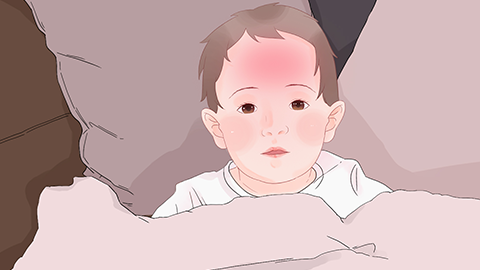What to do when a 2.5-year-old child has a fever
Generally speaking, fever refers to elevated body temperature. Fever in a 2.5-year-old child may be caused by factors such as high environmental temperature, after strenuous exercise, upper respiratory tract infection, roseola infantum, pneumonia, and other reasons. It is recommended to seek timely medical consultation and follow the doctor's guidance for treatment, including general management and medication. Detailed analysis is as follows:

1. High Environmental Temperature
The thermoregulatory center of children is not yet fully developed. When the external environmental temperature is too high, it becomes difficult for the body to dissipate heat, causing heat to accumulate in the body and lead to fever. It is recommended to maintain an indoor temperature of approximately 22°C to 26°C and avoid keeping the child in a high-temperature or stuffy environment for extended periods.
2. After Strenuous Exercise
Active and energetic 2.5-year-olds may experience increased muscle activity and accelerated metabolism during vigorous exercise, producing more heat. At such times, the body's heat dissipation mechanisms may temporarily fail to remove the excess heat quickly, which may cause elevated body temperature. Parents should avoid allowing children to engage in strenuous exercise during peak heat hours and ensure timely hydration after exercise to help dissipate heat. Small amounts of warm water or lightly salted water can be given to the child intermittently.
3. Upper Respiratory Tract Infection
Upper respiratory tract infections are usually caused by viral or bacterial infections. Children's respiratory mucosa is tender and susceptible to pathogen invasion. After pathogens enter the body, they trigger an immune response, producing endogenous pyrogens that elevate the body's temperature set point, leading to fever. Symptoms may also include coughing and a runny nose. Under a doctor's guidance, medications such as children's paracetamol and chlorpheniramine granules, ribavirin granules, or amoxicillin-clavulanate potassium dry suspension may be used for treatment.
4. Roseola Infantum
Roseola infantum is mainly caused by human herpesvirus 6 infection. After viral infection, massive viral replication occurs within the child's body, triggering a strong immune response and resulting in persistent fever. Symptoms may also include irritability and reduced appetite. Patients may follow medical advice to use medications such as paracetamol suspension drops, ibuprofen granules, or calamine lotion for treatment.
5. Pneumonia
Pneumonia may be caused by infection with pathogens such as bacteria, viruses, or mycoplasma. After invading the lungs, these pathogens trigger an inflammatory response, releasing large amounts of inflammatory mediators that stimulate the thermoregulatory center, resulting in persistent fever. Symptoms may also include shortness of breath and difficulty breathing. Patients may follow their doctor's recommendations to use medications such as azithromycin dry suspension, ambroxol oral solution, or ceftriaxone sodium for injection for treatment.
It is important to adjust clothing according to weather changes to prevent children from visiting crowded and poorly ventilated places, especially during disease outbreak seasons. Ensure a balanced and nutritious diet for the child, with more fresh vegetables and fruits, and encourage regular physical activity to enhance immunity.




